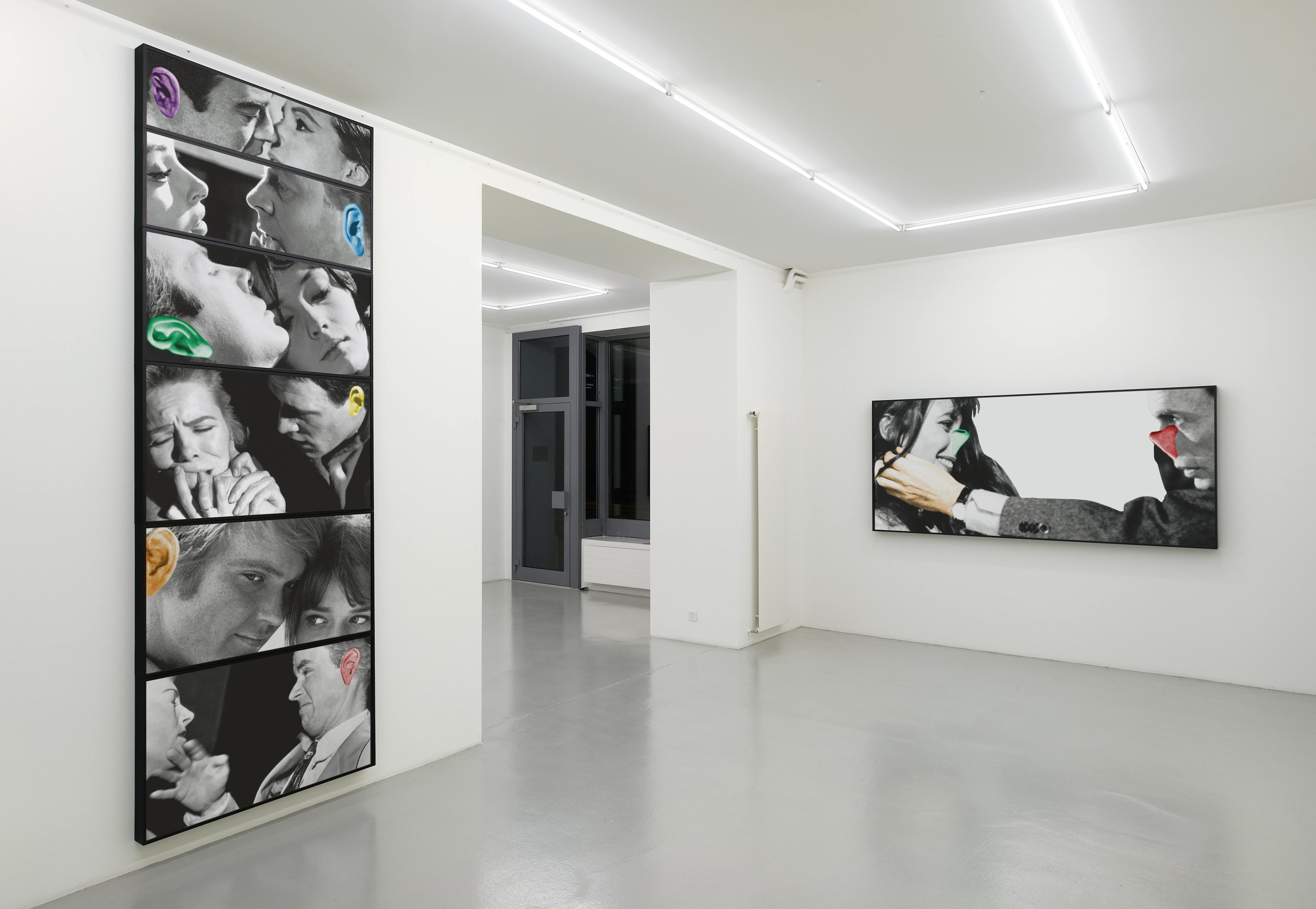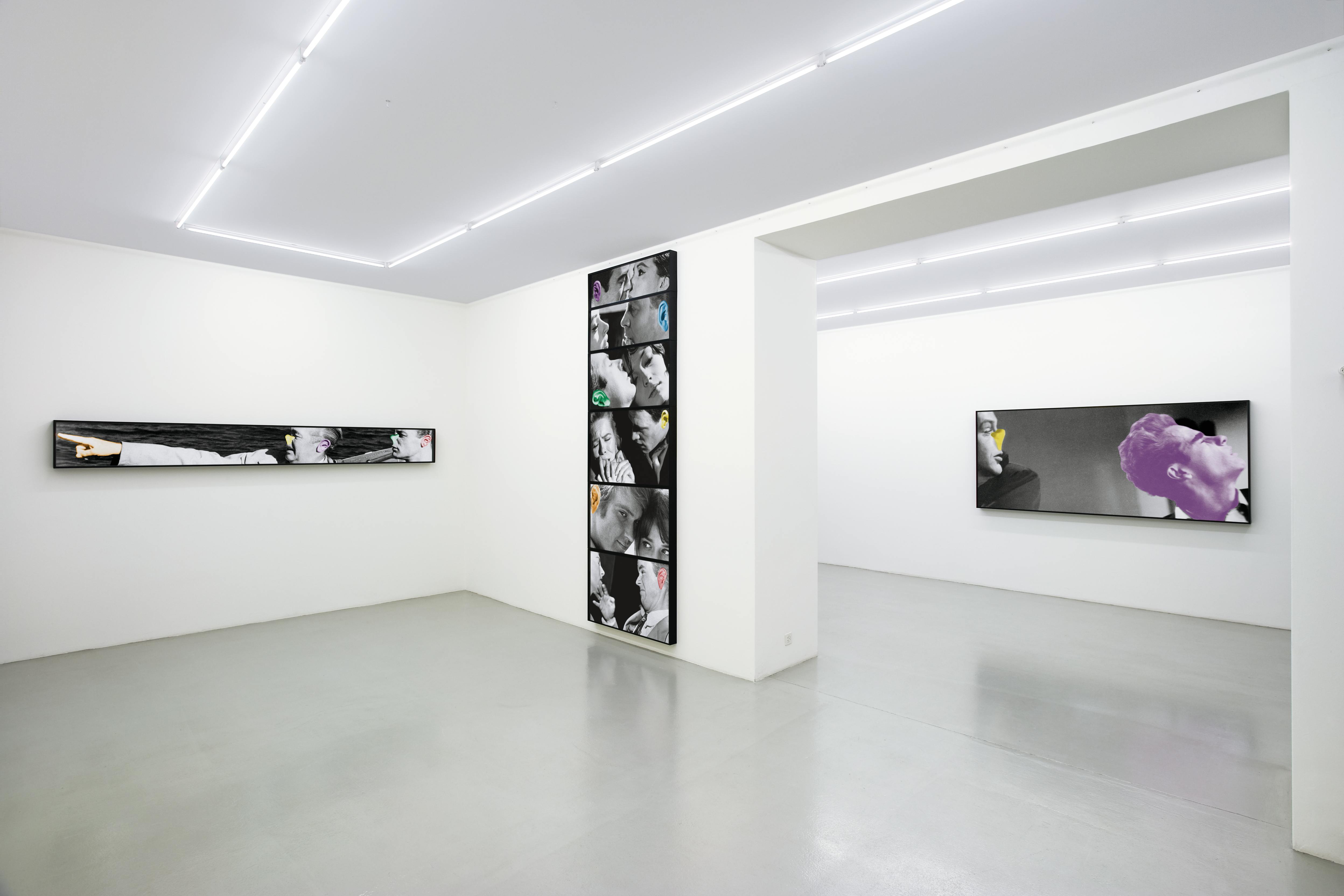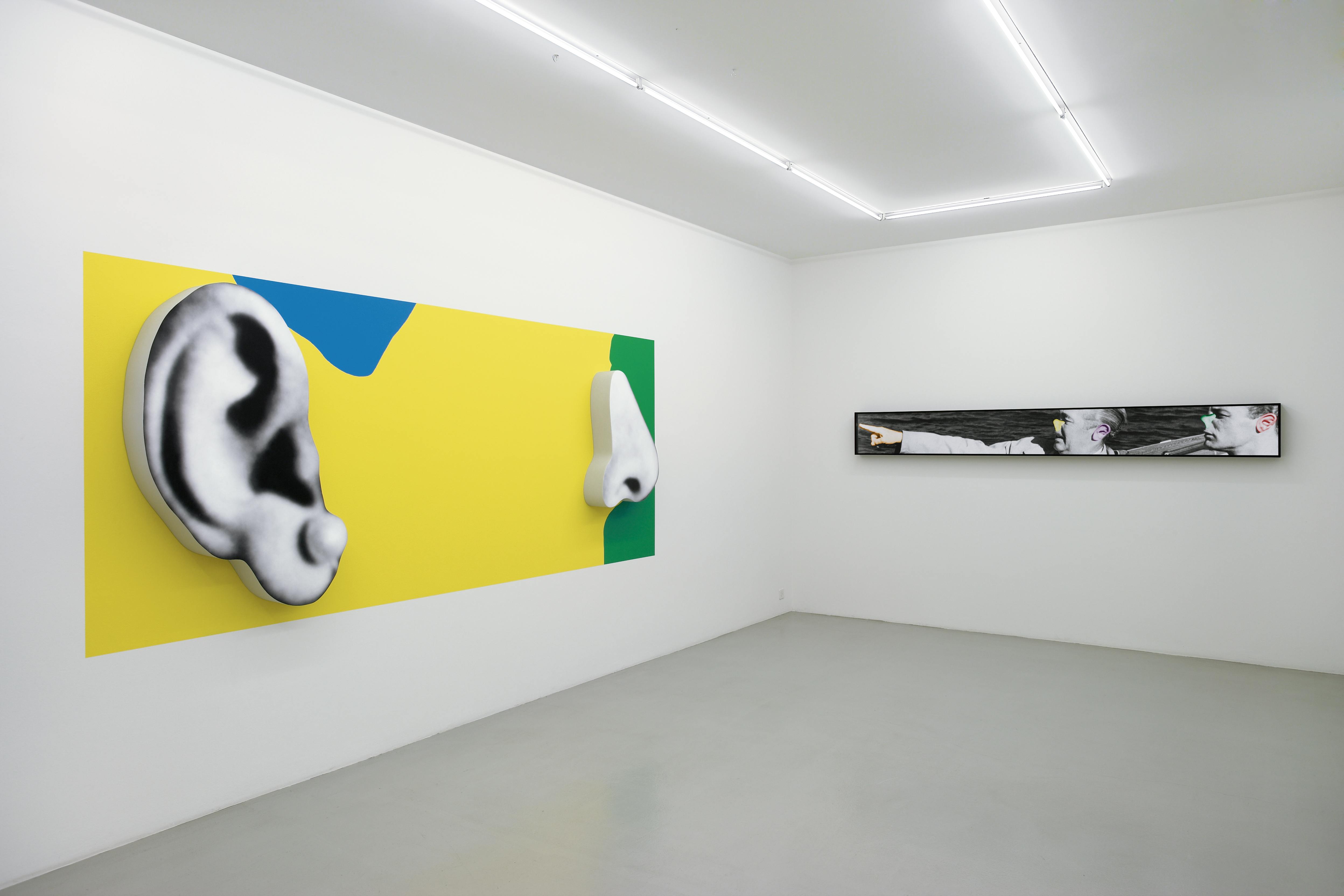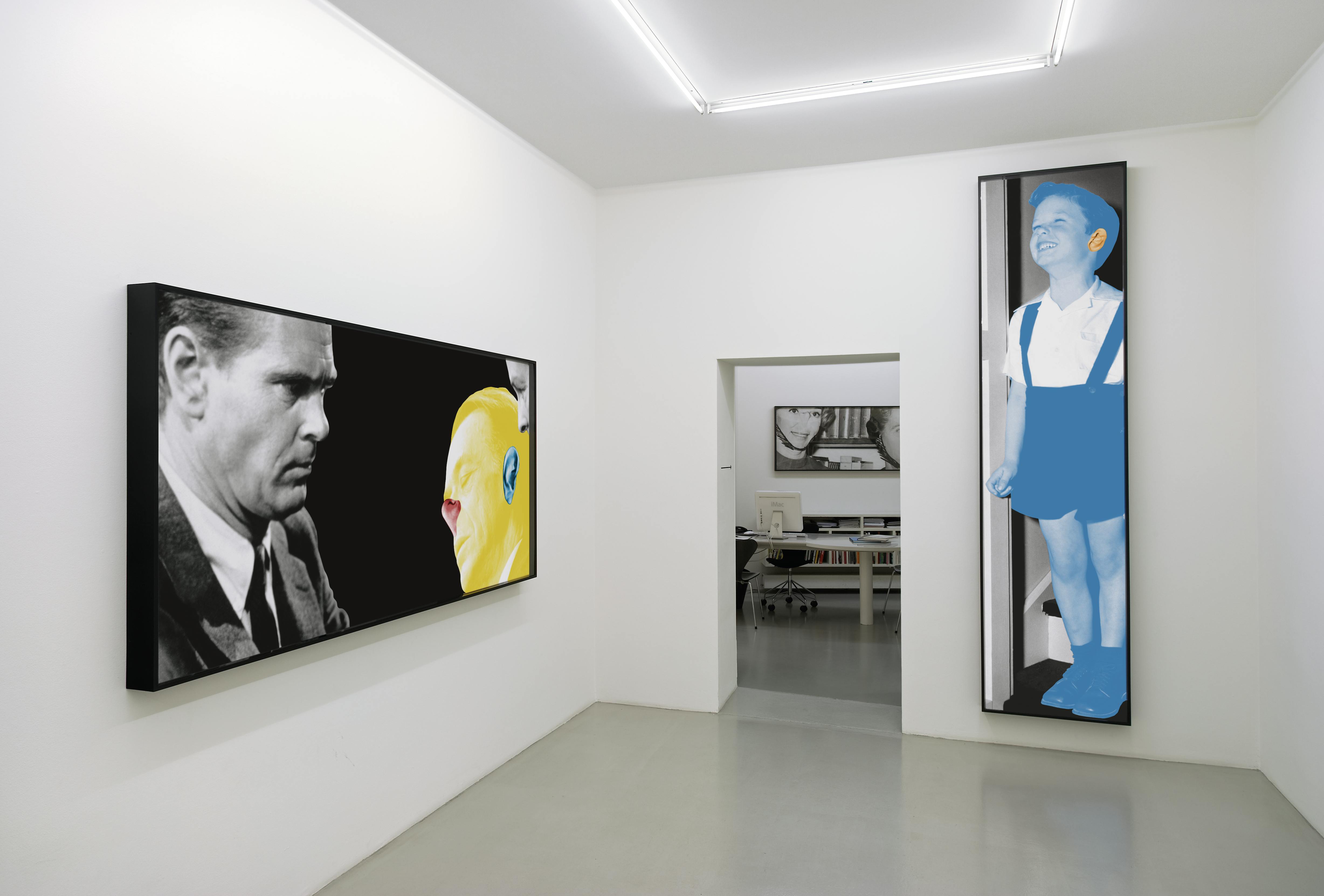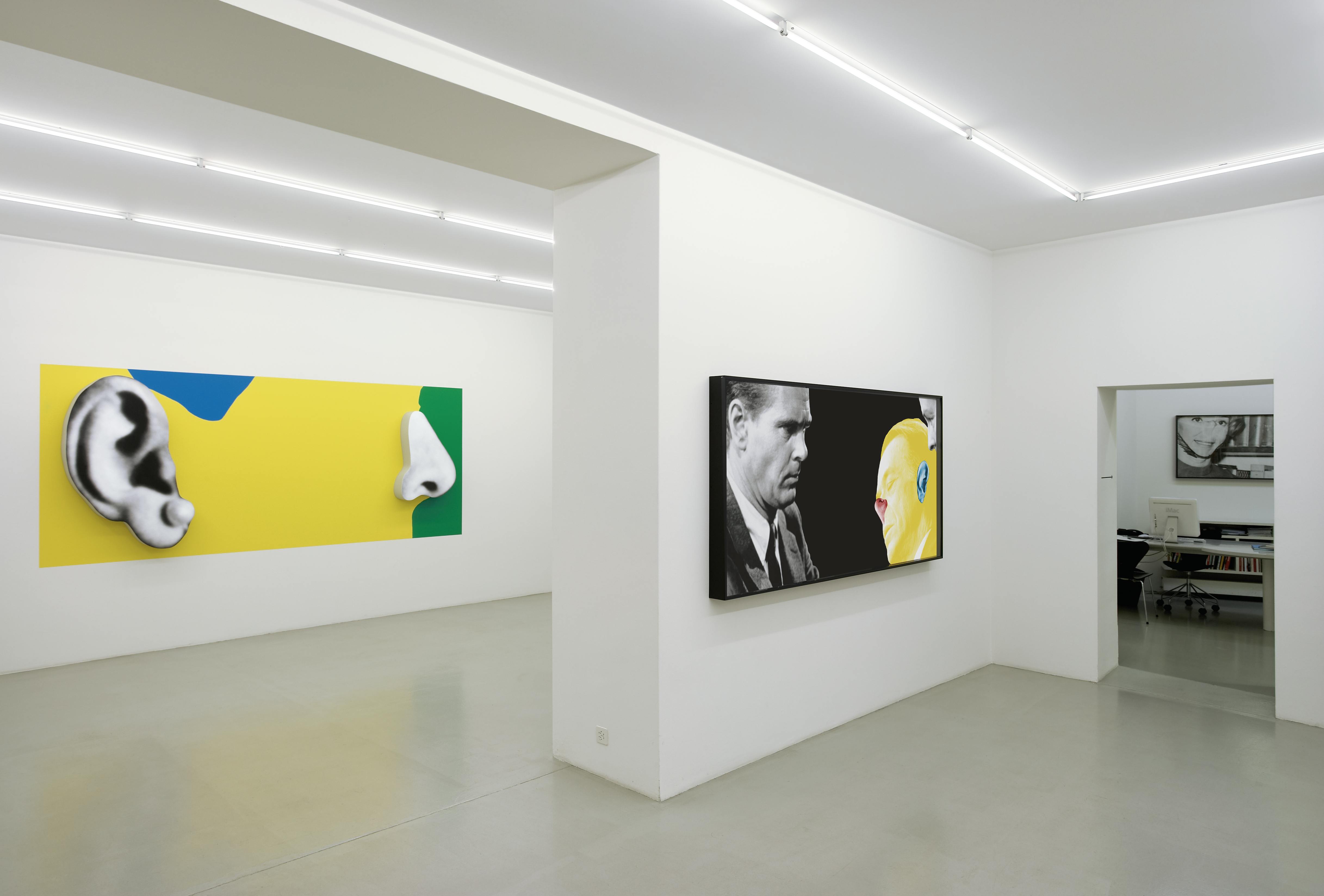We are pleased to present a new series of works by the American artist John Baldessari. John Baldessari (*1931 in National City, California, lives and works in Santa Monica, California) has been numbered among the most prominent, versatile representatives of Concept Art since the late 1960s. His spectacular “Cremation Project” of 1970, in which he burnt most of the paintings he had created before 1966, celebrated his repudiation of contemporary painting. Seeking a generally comprehensible formal idiom, he began focusing his work on photography and video performances, films, posters and books. He uses media images as his raw material, alienating their messages by fragmentation, text montage and overpainting, in the process questioning their meaning and establishing unexpected contextual links. His often humorous compositions not only puncture clichés, they also undercut our reading habits and interpretational routine. Alongside his busy exhibition schedule, Baldessari teaches at the University of California, Los Angeles. He has been honoured with the Governor’s Award for Lifetime Achievement in the Visual Arts in California, the Oskar Kokoschka Prize and the Spectrum International Prize in Photography of the Lower Saxony Foundation.
The exhibition continues John Baldessari’s latest series of “Noses & Ears, Etc., Part IV”, a group of overpainted, digital photoprints. As the title implies, the new series highlights noses and ears, with coloured circles obscuring the rest of the face. While the isolated representation of eyes and lips stands in a solid art-historical tradition - we need only think of the eyes on Nepalese temples or Dali’s lip sofa - there is something irritating, strange or even eerie about lone ears and noses. By limiting himself to noses and ears, Baldessari confirms the humour of his approach, but also restricts human identity to a minimum. When Baldessari blocked out faces from Hollywood film stills with coloured circles in the 1980s, he was already defying our media-driven habit of wanting to interpret the expressions of these faces according to traditional codes. Concealed faces reduce human identity to a minimum. And that is equally true of isolated ears and noses, as long as they are not associated with brutal kidnappings or physical deformities. Obscuring a face, or focusing on ears or noses, negates individuality, transforming an identifiable subject into an unidentifiable object. It bars the pictures from interpretation while simultaneously offering an opportunity for unbiased reading, for insight that transcends our media-programmed inventory of images and enables the viewer to gain a new outlook on the world.
[Text: Dominique von Burg]






